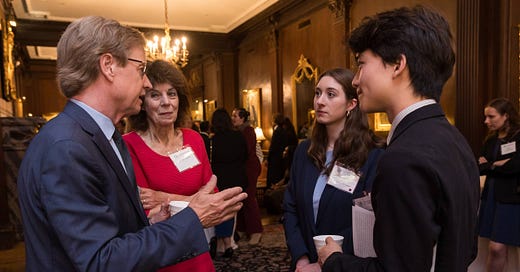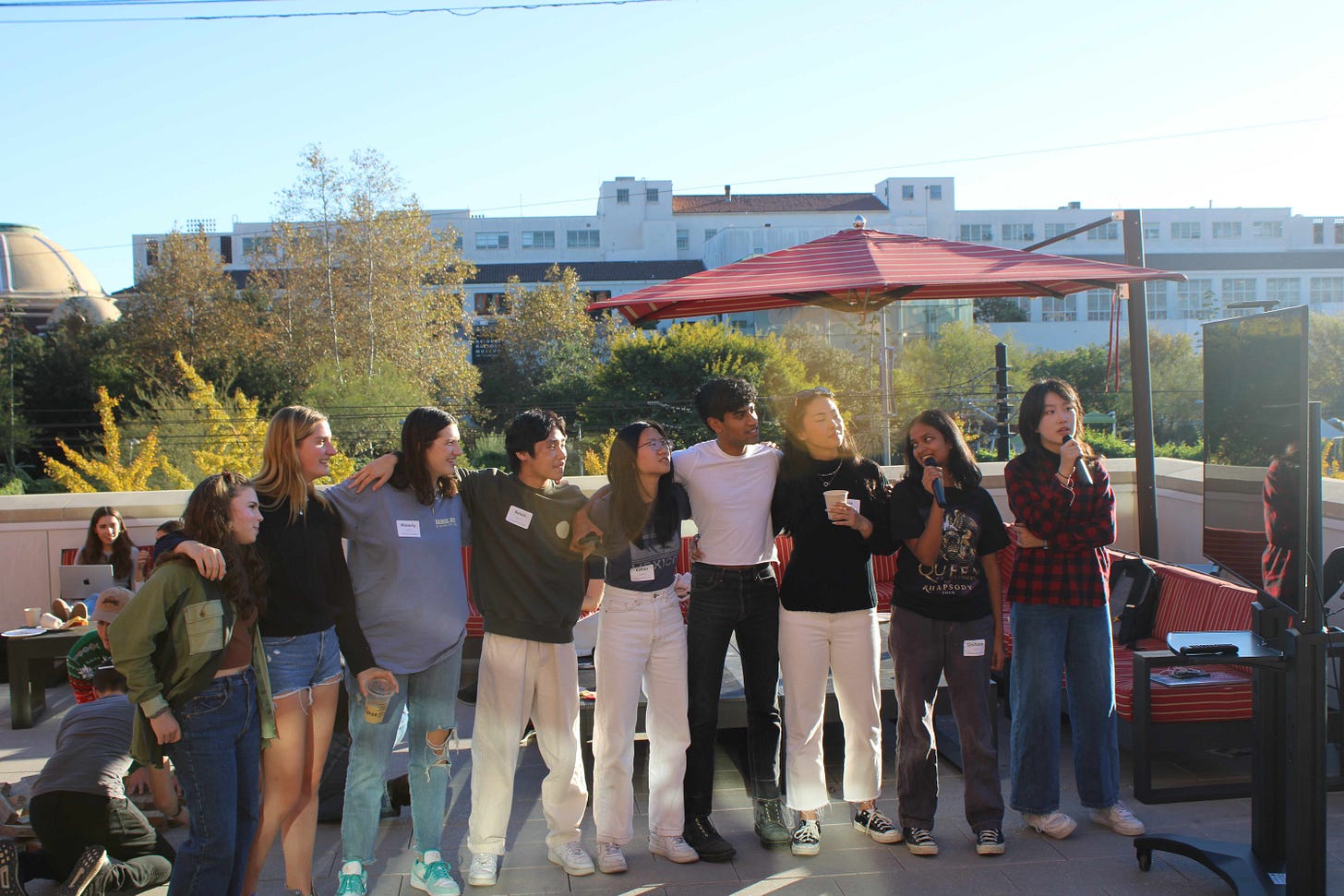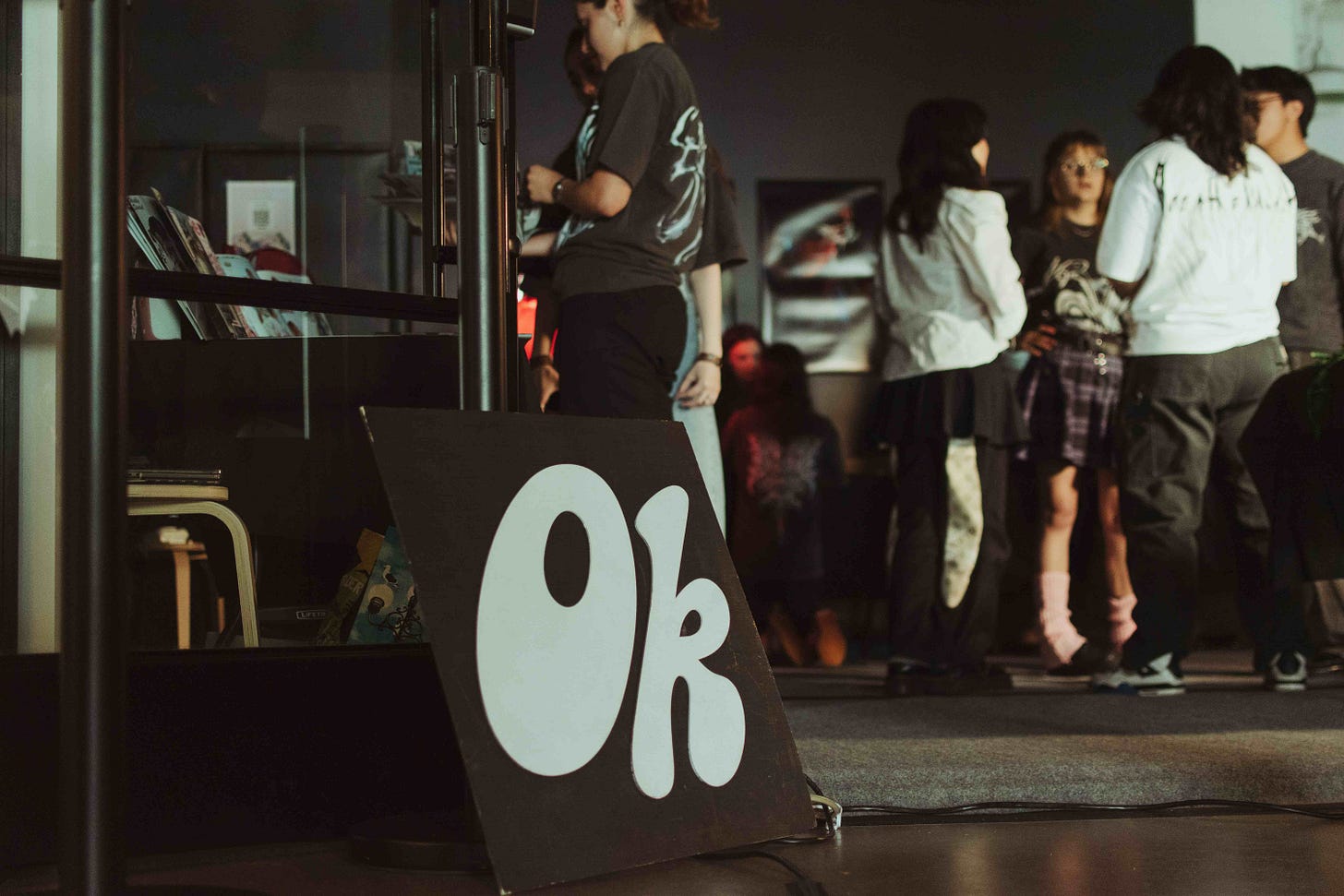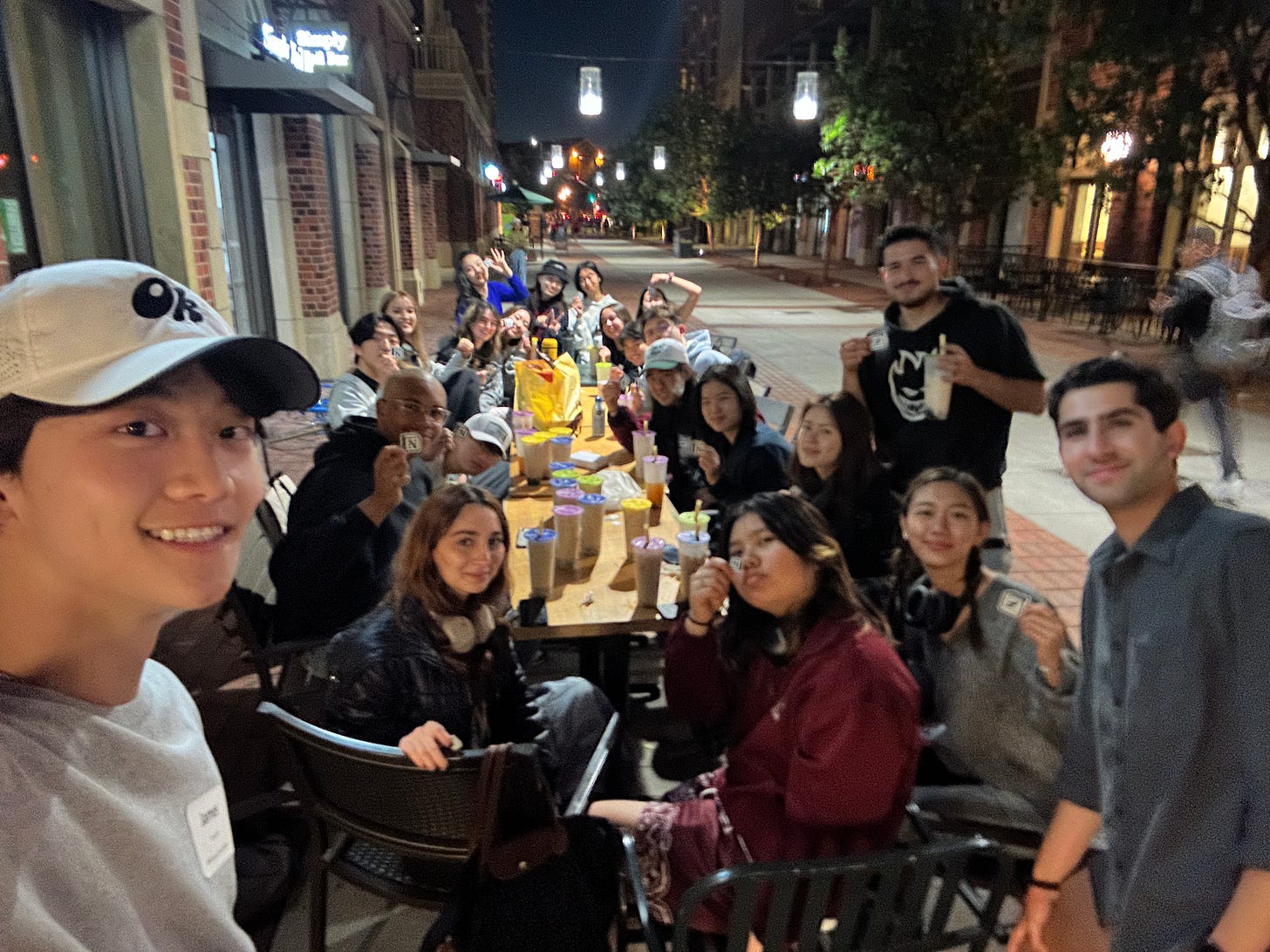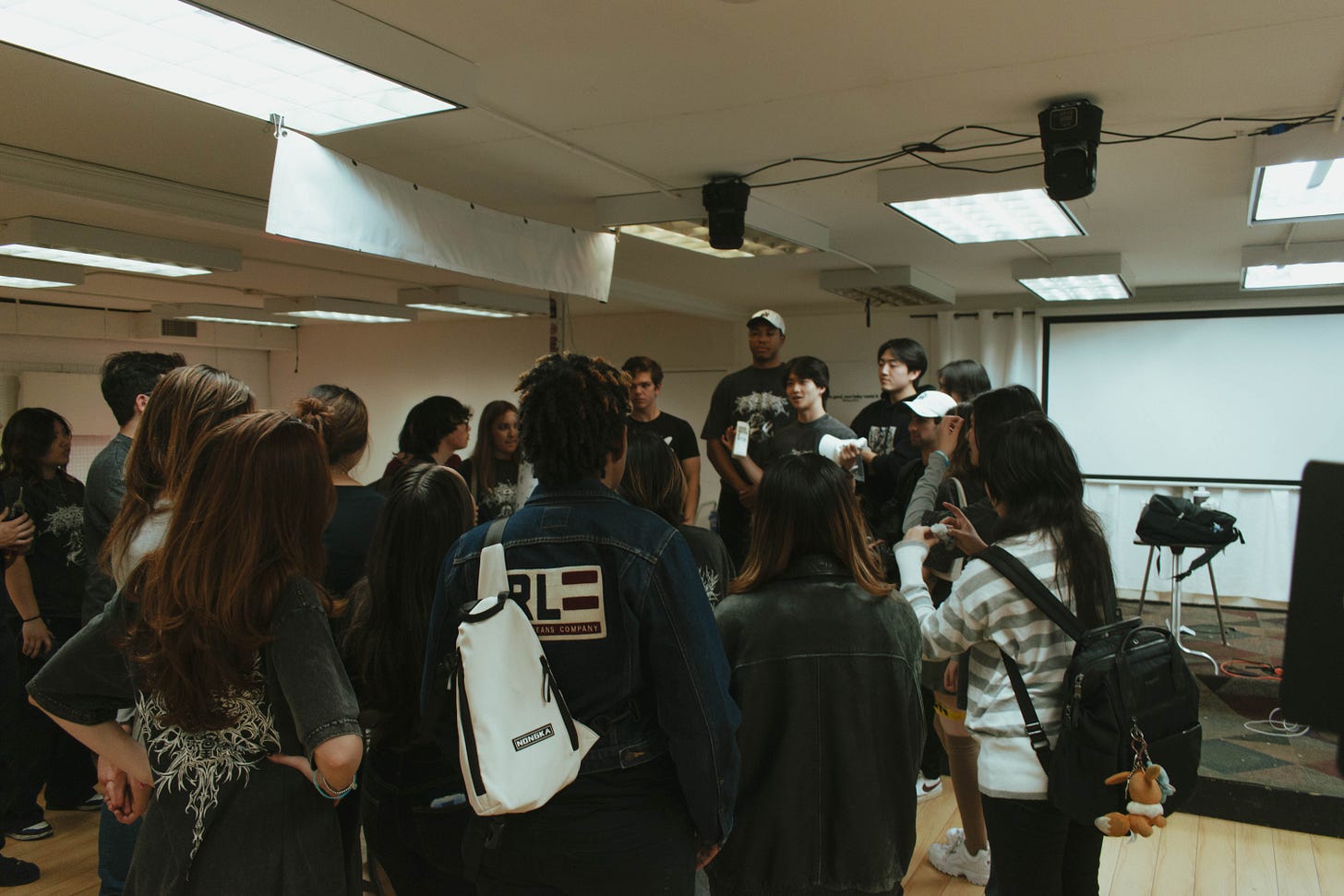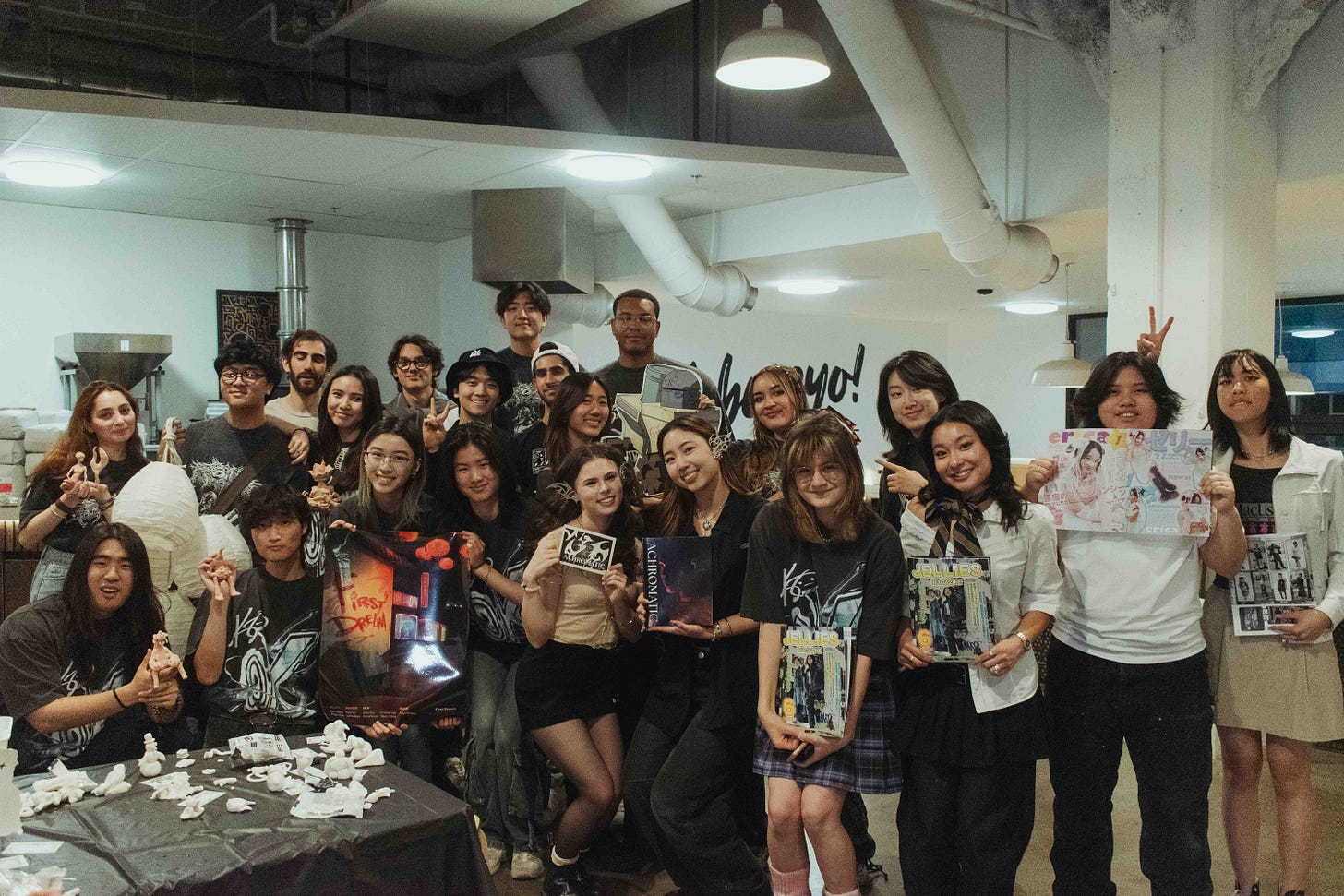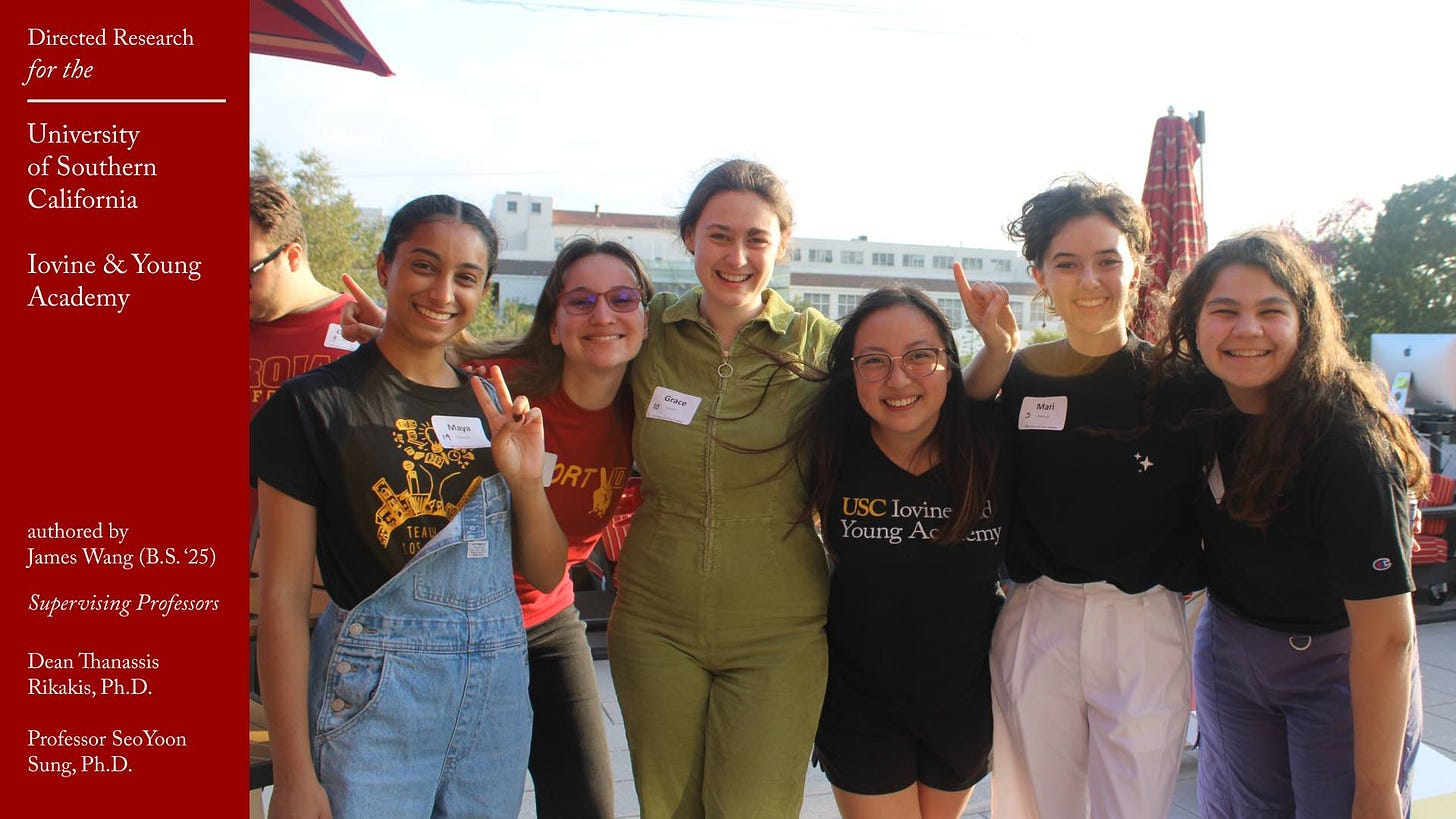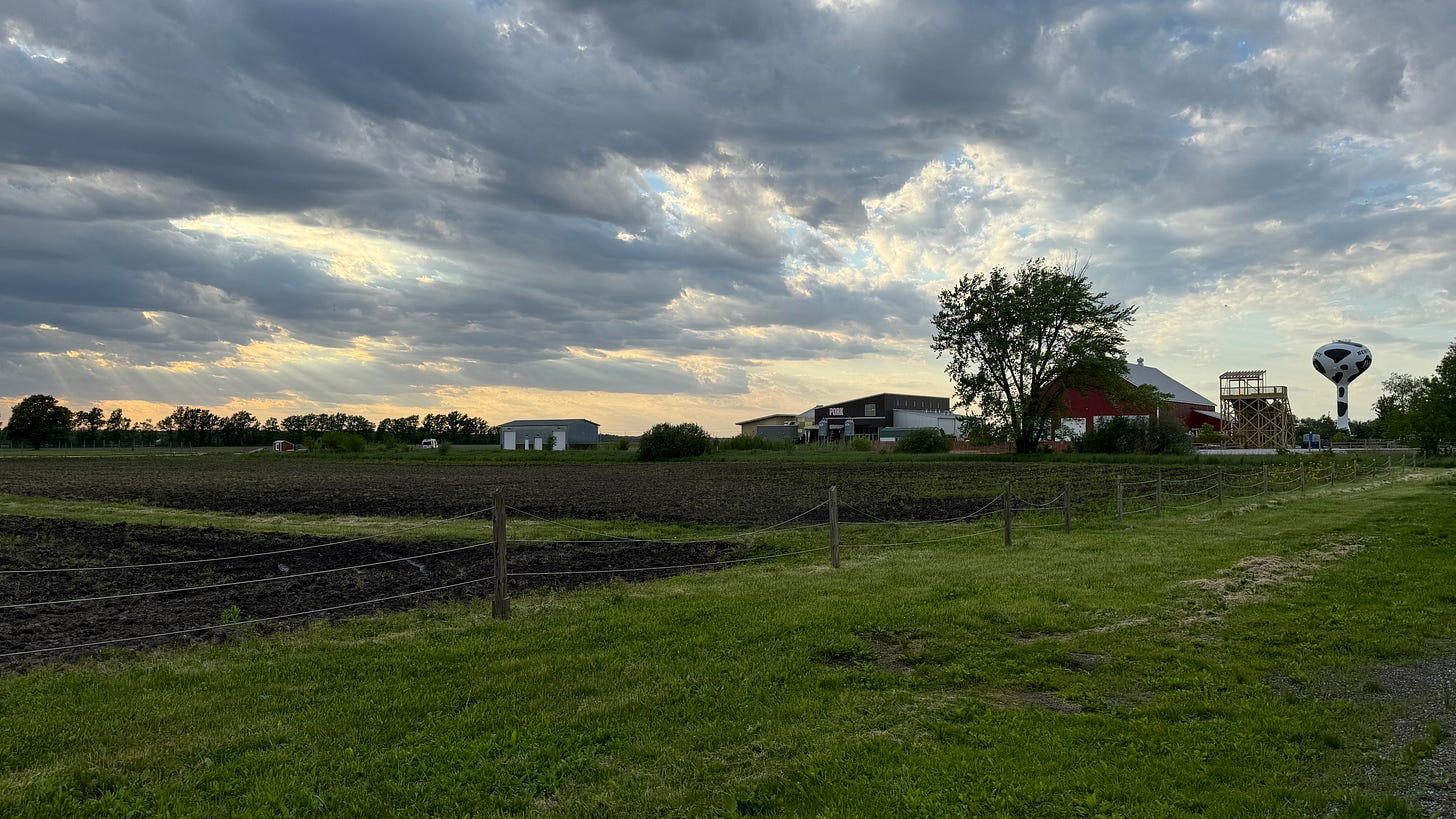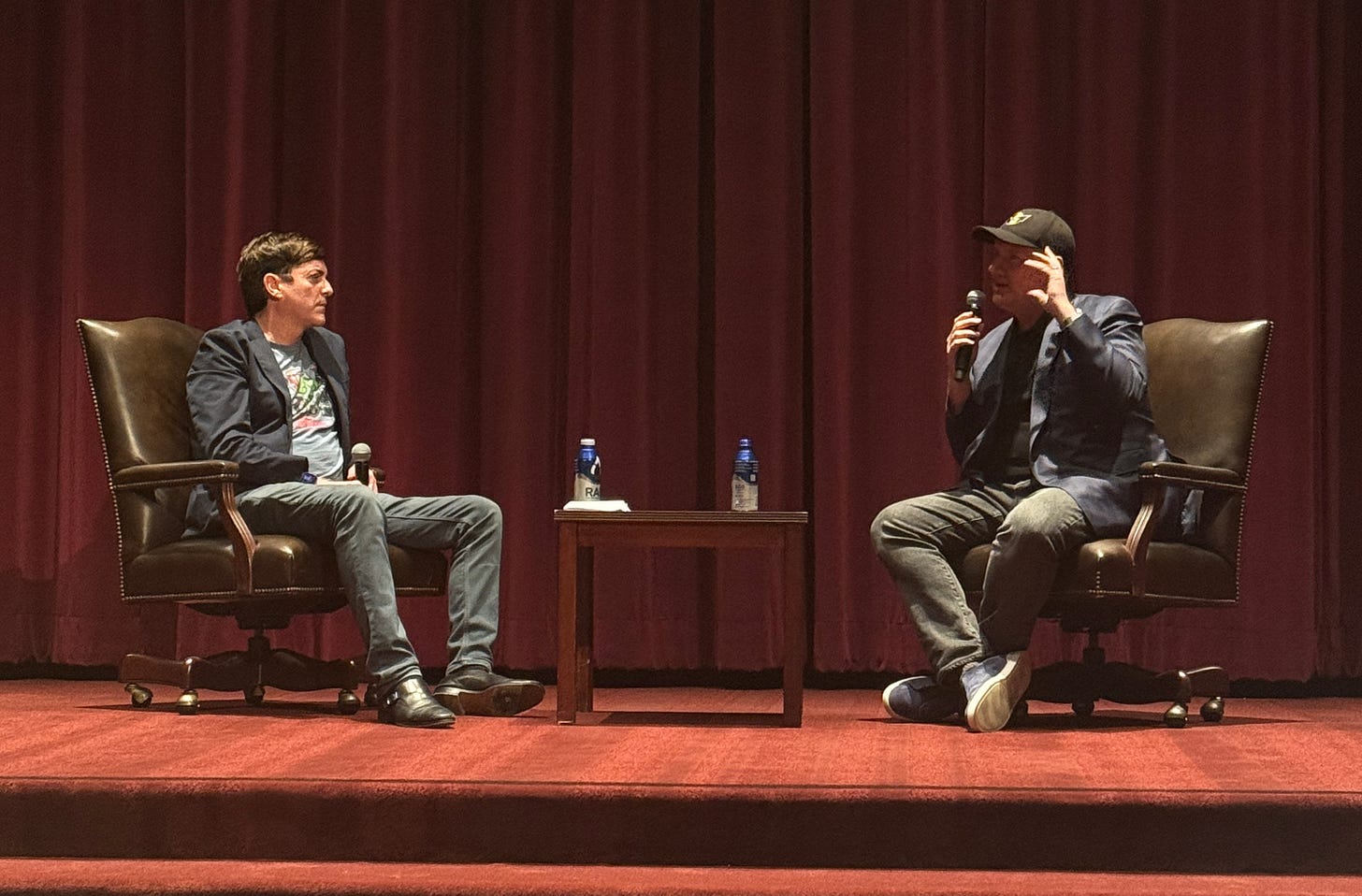Hi, it’s James!
It’s been almost a year since my last post… what a whirlwind.Just a refresher — I’m a senior at Dr. Dre & Jimmy Iovine’s innovation school, where I study Arts, Technology and the Business of Innovation (the wordiest degree at USC). I run a creative student org (called OK), work at IMPaCT Care (the nation’s leading community health worker system) and have spent time at organizations like the LA Department of Public Health, Zappos, Mighty Health & SAP.
Why you’re getting this: I send this (usually) bimonthly email to keep in touch with friends, old and new, and to let you know what I’ve been up to. It’s probably the only time I get to actually sit down and reflect… plus, it’s really fun to do.
*This email is long overdue, but so much has happened last year that it’s been hard to write. Hopefully it’s worth the wait.
NOTE: Make sure to click “VIEW IN BROWSER” above to see the full post. Thanks!
Schaeffer Fellowship
I had the incredible privilege to take part in the Leonard D. Schaeffer Fellowship in Government Service this summer. Carefully developed by Leonard Schaeffer, the founder of WellPoint (now Anthem) and the architect & former administrator of the Centers for Medicare and Medicaid Services (CMS), the fellowship supports rising talent in public policy roles. Apart of the 10th class of the fellowship, I spent time at the Los Angeles County Department of Public Health as a policy fellow (more details below).
The opportunity to work alongside brilliant peers, who were at agencies like the Department of State, OMB, DoJ and more), was incredible. I got to meet with the wonderful folks on the advisory board as well — like Jack Ebeler (former Vice Chair of the Medicare Payment Advisory Commission) and Brian Osberg (former Director of Minnesota Medicaid).
Given the fact I’ve never taken a public policy course and my major has nothing to do with government, these relationships are especially crucial. And experiences like these are where my learning really happens. I get to be a student in the fullest sense — taking a step back, listening first, ask sometimes thoughtful, sometimes stupid questions and piece together things from first principles. What a privilege that is.
So much work is still ahead, but I’m grateful to have the fellowship under my belt.
Reducing Medical Debt at the LADPH
Under the Schaeffer Fellowship, I worked at the Los Angeles County Department of Public Health (LADPH) as a policy fellow under the Healthcare Financial Harms team, led by Dr. Naman Shah. I just finished my tenure last week — and what an experience it was.
No doubt, it wasn’t the most glamorous role… the elevator had been broken for months, our sister building got asbestos and there were no windows in our workspace. Walking almost an hour, in the heat, to the office wasn’t so fun either. But what it lacked in allure it made up for in the weight of the work we did. The DPH certainly wasn’t immune to scrutiny during the pandemic and the words “public health” still hasn’t recovered in the eyes of many Angelenos.
But the incredible team I got to be apart of — Vardan, Melina, Naman, Ali, Ashley, Drew, Allie and so many more — inspires a ton of hope in me. It’s not an easy job (“thankless” doesn’t begin to capture it), but public health is so crucial when it comes to quality of life in LA. How can you think about education, about housing, etc. when you have to worry about paying for a critical medical procedure? Rebuilding the trust of our constituents isn’t easy but requires us to make small, measurable inroads each day.
This summer, our team eliminated medical debt for 150,000 residents ($500m of total debt) in the county as well as passed an ordinance to require reporting for hospitals that pursue patients for unpaid bills. It was an extraordinarily productive period.
My primary focus was on bringing technology vendors, hospitals and patient advocacy groups together so that more patients would be screened for presumptive eligbility – meaning that if they i.e. qualify for a means-tested program like CalFresh, they would automatically be eligible for financial assistance. We hosted two showcases with leading vendors like Dollar For and had 80+ representatives from multi-facility hospital systems like Kaiser Permanente attend.
It was definitely a challenge to reconcile the naturally slow pace of local government with the significant directives we’ve been tasked with. Much of the progress we’ve made has been resisted by HASC (the powerful hospital lobby in Southern California), but they are still our partners and we have to engage in productive dialogue — even when it’s difficult. Working at the DPH really gave me a strong appreciation for the sheer patience and determination it takes to be a public servant. Many members of the team have been with the department for 20-30+ years and they’re still as passionate today as when they started. That’s really something to admire.
Growing the Nation’s Leading CHW System
My journey to IMPaCT Care, the epicenter of the community health worker (CHW) movement in the US, was far from planned. I first met Dawn Alley, the Head of Scale, through an intro from Eric Hargarten, the SVP of Ops at CareBridge Health. Eric told me that Dawn was the person to talk to about population health. Plus, she’s a fellow Trojan.
At first, I just wanted to learn. I had no intention of landing a job and adding another commitment in an already-busy semester. I was talking to folks like Eric (who was formerly a Senior Advisor at the Center for Medicare and Medicaid Innovation - CMMI) to better understand how policymakers thought about designing payment models that could more truly align with the tenets of value-based care.
I knew little about health policy — I’m still no expert — but was certain that Dawn could teach me a lot. Dawn was formerly the Chief Strategy Officer of CMMI (running the Maryland Total-Cost-of-Care model and other important demonstrations) and was a former executive at JP Morgan & ARPA-H. Our conversation was brief, only about 30 minutes, but felt like many hours. I learned more in that short call than in many of the months-long courses I’ve taken at USC.
At the end of our call, Dawn told me she was looking for someone to join her on IMPaCT’s Scale team — somebody who brings up terms like “FIDE-SNP RFP”, “1115 waivers”, and “Stars” when talking to friends who aren’t remotely interested in healthcare. Well… I sort of fit that bill. Still skeptical, I took her up on a follow-up call.
If you know Dawn, then you know she’s convincing.
Long-story short, I’ve spent the last 6 months at IMPaCT scaling the the best workforce in healthcare. Started by the poster-child of CHWs, Shreya Kangovi (the founder of the Penn Center for CHWs), IMPaCT Care spun out of UPenn Medicine more than a year ago and has been helping organizations like Kaiser Permanente and TennCare (Tennessee Medicaid) build and scale CHW programs.
Under the RCT-proven IMPaCT model, CHWs generate $2500 of annual net savings per patient and an ROI of $2.47:1. It’s just incredible.
I’ve traveled with the team to places like Philly and Baltimore, met with so many inspiring CHWs (they embody community in every sense of the word), and have gotten a lot done with Dawn, Shreya and the team. It’s fast-paced, intense work — especially on top of my responsibilities at the DPH — but it couldn’t be more invigorating.
CHWs are the reason why countries like Costa Rica can outperform the US in health outcomes with a fraction of the spend. A lot of folks are skeptical that the model can be replicated in the states. But I think otherwise. IMPaCT is one of the rare companies that can actually drive systems-wide change. If not, Shreya wouldn’t have spent 10+ years building the foundation at Penn. It’s been special to play a part, small as it may be, in the journey.
Building Community at the Academy
The theme of this past year at the Iovine & Young Academy (IYA), beyond anything, has been building community. Last August, I took on the lead for student-driven community and it’s been a lot of exciting work since.
Community is often thrown around as a catch-all term, and in its broadness we lose sense of what it entails and why it’s so critical. Within the Iovine & Young Academy, it’s meant creating tangible points of contact between our students, faculty and administration. It’s meant reinforcing an essential proposition of the Academy (and USC more broadly) — that the people you meet are just as value as the classes you take.
I remember during the interview weekend when I was applying, being shown all the bells and whistles of the Academy — from our 10,000 sq ft makerspace to the 360° motion capture studio. All of that was impressive, no doubt. But the intangible I sought, the true selling point of this 4 year commitment, were the relationships I’d form. Meeting people far more talented than me, garnering new perspectives… it’s banal but this was what it was all about.
Yet the rosy marketing pamphlets and admission videos bely the fact that college can often be a lonely, isolating experience. It’s something I haven’t forgotten about when building out OK and especially at the Academy. Every inroad we make towards this matters.
We’ve been able to bring every current class of the Academy together in our events (much more difficult than we thought) and have continued finding ways to engage students outside the classroom.
Though we have a fair share of headline programming (be it our decade celebration or end-of-year awards ceremony), it’s often the smaller, more frequent events that makes the ultimate difference.
And it’s not just about garnering a few pretty pictures for the school’s website. What we’re really trying to do is lay the bedrock for community to thrive many years ahead. Frankly, it’s going to be tough, and we definitely don’t have all the answers yet, but it’s just really energizing to make the place we call home a little bit better each day.
You can read a feature detailing more here.
One Full Year of OK
It’s surreal… it’s been one full year since two friends and I founded The OK Foundation. We sought to become the place for creative work at USC. And in many ways, we’ve done that. We’ve scaled output more than we ever thought we could, built relationships with great organizations and created a community of folks we absolutely love spending time with. What more could we ask for?
And though the journey hasn’t been easy, it’s been well worth it. Yet it also comes with fresh challenges. Outsized interest means we have an increasingly talented pool of applicants, but it also means we have to turn away more people than ever. Demand from potential sponsors means fundraising runs smoother, yet pushes us to be more discerning around advancement opportunities.
I want to be clear. We’re not perfect. Far from it.
Sure we’re more confident in the platform we’ve built than ever, but there’s still a lot more to do. Our operating ethos has gradually shifted from a razor-focus on rapid growth to preserving our long-term quality. Maintaining the longevity of an organization like ours has, and will continue being, a tough challenge.
We need to develop the future generation of leadership, codify a more standard framework around project funding and keep doubling down on professional development. It’ll require us to think less strictly as “leaders” and more as stewards.
We think we can do that.
Our north star this past year was to address our biggest gap — community. It’s something that was especially tough last spring and also a challenge that many of our peer organizations struggle with too. But inch by inch, we managed to convert community into one of our biggest strengths. From hosting weekly breakfasts to movie nights (and even boxing workouts), there was something happening almost every single day. It made our partners feel more seen, more heard, and more essential — as they should feel — in our organization.
Plus, the output of our partners keeps getting better. From a neo-noir animated film to a tarot card collection, you can check out the diversity of our output here.
This upcoming year, and I say it every single post, will be make-or-break. This will be my last year on campus and figuring out succession won’t be easy. But the seeds we’ve planted since day one — our investment in talent, resources and brand — will pay off. It has to. And we’ll keep treading forward.
Directed Research
As I mentioned in my last post, I conducted directed research with Dr. Thanassis Rikakis (Dean of the Iovine & Young Academy) and Dr. SeoYoon Sung (assistant professor of learning innovation) about envisioning the next 10 years of IYA’s pedagogy, operations and community.
It was an invigorating exercise in thinking through both the immediate and long-term challenges that face the school. I spoke with everyone at the Academy — from Adrian (academic advising) to James (admissions) to Laura (advancement/programming) and of course my fellow students — but the most important insights were garnered by creating real touchpoints, like our community events, to test our assumptions.
There were natural complexities when it comes to having such an expansive research topic but I think the toughest aspect of the process was reconciling the difference between theory and the day-to-day implementation. Both Thanassis & SeoYoon come from a deeply academic background, but a lot of the challenges our institution faces is immediate, with variables that change day-to-day and outcomes that can’t be perfectly measured.

Dr. Rikakis & Sung are two of the leading academics in challenge-based learning and it was useful to exchange our learnings as we attempted to codify our theory into systems that students could actually engage with. Shortly after my research project, Dr. Rikakis & Sung published a paper which defines our pedagogical framework in what we coin challenge-based reflective learning. There’s still much to do to continue building upon this framework, but it’s important progress for our still-nascent institution.
Later in the year, I spent time with Dr. Alexander Titus, a commissioner on the National Security Comission of Emerging Biotechnology and principal researcher at the USC Informational Sciences Institute. Under his lab (In Vivo Group), I worked on developing a framework around building & testing artificial intelligence in clinical settings.
Despite the rapid proliferation of large-language models (e.g. GPT-4, Opus, Llama), the ability to implement these advanced technologies into patient-facing care settings has been limited. A study in Nature framed it precisely: “Current efforts to use AI in healthcare often begin with “I have a ML model that can accurately predict or classify X”, but then get stuck at “how do I use it and for whom?”.
In May, I presented my findings at the USC Center for Artificial Intelligence in Society’s ShowCAIS. I felt a bit out of place, as most of my fellow presenters were post-docs. It was great, though, to be able to talk to academics who had such varied interests in AI — the event hosted researchers from the Viterbi School of Engineering, Mann School of Pharmacy, Keck School of Medicine and more.
A New Role at the School of Cinematic Arts
I’ll be helping teach CNTV 473, a course on the intersection of technology & media, with Diego Berdakin (former executive at News Corp; Chair of Media Ethics at USC), Michael Broukhim (CEO of FabFitFun), and Shaun Maguire (Partner at Sequoia Capital) this fall.
The class was a favorite of mine when I took it last year. Being able to understand the narratives in media and how technology can accentuate them is especially crucial. But it’s difficult to develop a curriculum where students can approach this topic in an empirical way and unlearn some of the natural biases they’ve picked up.
The classes I’ve taken at SCA have all been incredibly enriching. To be on the other side of the room is daunting but will no doubt be rewarding. We have a great lineup of guests this coming semester and I’ll share updates in my next post.
What I’m reading and watching 📚
As always, I like to share some of the great content I come across. Click on the titles (they’re linked) to explore!
On The Page
Long-form
Perhaps the only window into the greatest conductor of all time. Notoriously private but talented beyond belief, Carlos Kleiber’s baton guided the most legendary performances — from his revered Der Freischütz to iconic Neujahrskonzerte. But even the most ardent listeners know very little about him. This is the chance to reverse that.
It’s the story of the greatest art dealer of all time. The man who convinced Mellon, Rockefeller, and Morgan (not Ford though…) that they should, at the height of the Great Depression, empty their coffers into the old masters. It was Duveen who founded the National Gallery of Art. Compelling, entertaining and provocative — it’s a work of art in itself.
A recommendation from Brad Smith (the former director of CMMI), this is an incredible read on how some very basic solutions can solve very big problems. A masterclass in cost-benefit analysis, it plainly shows the hubris underlying the UN’s SDGs and how a little bit of common sense can go a long way.
A classic American tale on how keen insight, unrelenting work and a reverence for the consumer built the most iconic company in the world. Most people don’t hold Ray Kroc in the same light as Steve Jobs, Bill Gates, etc. That’s a big mistake. Kroc made the Golden Arches synonymous with the American flag. Not an easy feat.
Short-form
A great piece on Schopenhauers’ approach towards a middle-way of happiness. Though what he did and what he said greatly deviated, the old German philosopher still has some useful insights for us.
Janan Ganesh makes a great case on why people should just be a little less trite.
Americans consumes way more sodium than they should (70% higher than WHO’s recommended). It leads to hundreds of thousands of deaths (through cardiovascular disease) and costs American taxpayers billions of dollars. Why is nobody talking about it?
Where have all the connoisseur collectors gone? | Financial Times
A well-written argument on the death of the collector and the dissolution of modern taste. Quite depressing.
Short yet perpetually insightful, Munger offers characteristically sharp observations in one of his last interview. This was Munger at his best.
A wonderful explanation on how the COVID pandemic changed the consumer forever.
Inside America’s least probable prison experiment | Financial Times
It’s hard to describe the effect of piece. An implausible story on how service puppies and convicts in a maximum-security prison aren’t as different as you’d expect. A must read.
A celebration of contentedness and how sensible the world’s “happiest” nation is when it comes to living a good life.
Desperate to Flee Africa, Migrants Stow Away on Ships to Brazil | WSJ
A cogent reminder of the promise our nation holds, a fact too easy to forget. Countless migrants, like John Ekow, sacrifice everything and never even get a glimpse of our shores.
Some Other Things
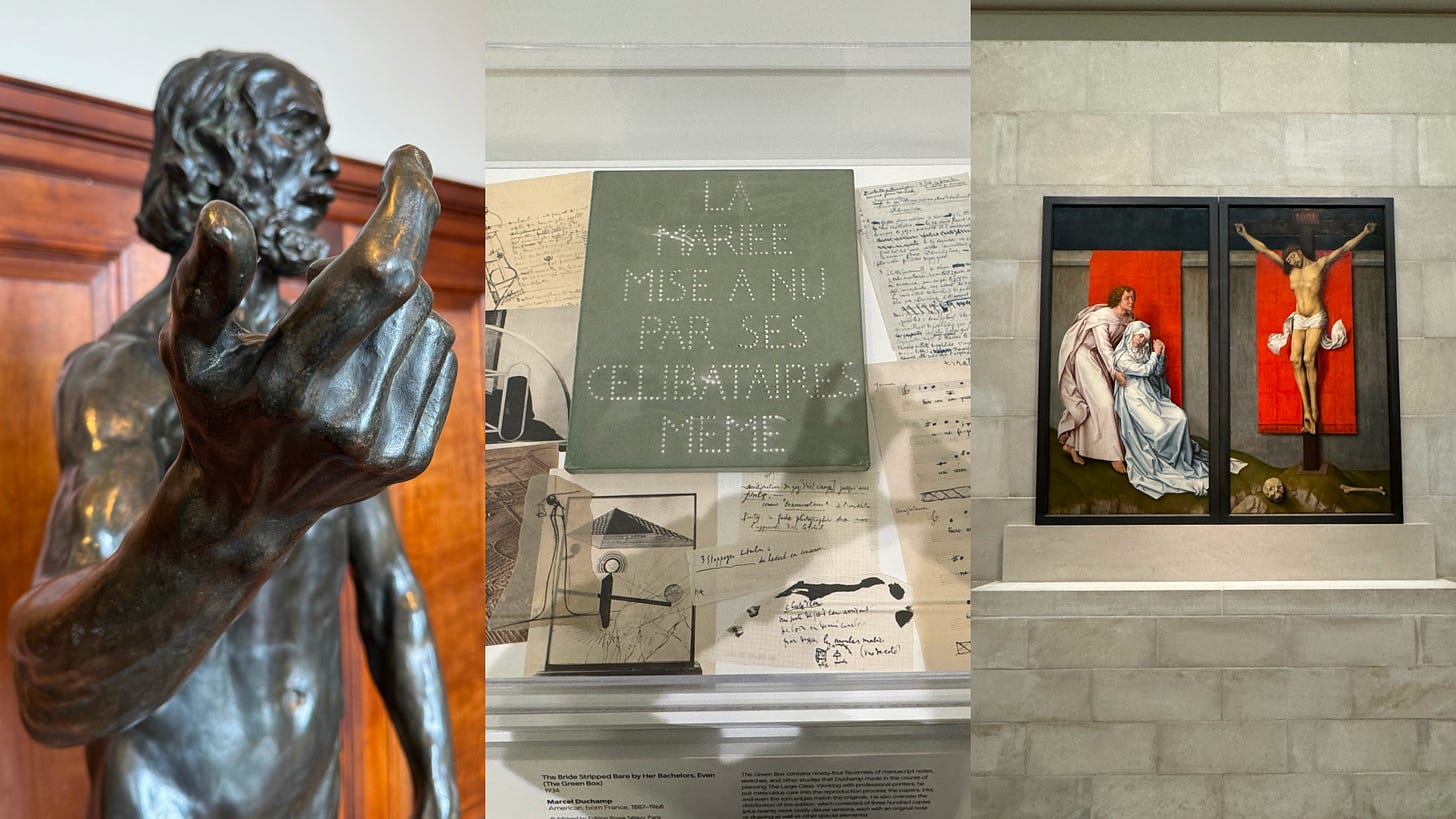
You made it to the end! There was a lot to pack in, but thanks for sticking with me.
As always, thanks for taking the time! Means a ton.
I’d love to hear from you in the meantime— even if it’s just a brief note or a hello!
Just reply directly to this email or reach out at jamessw@usc.edu
- James
